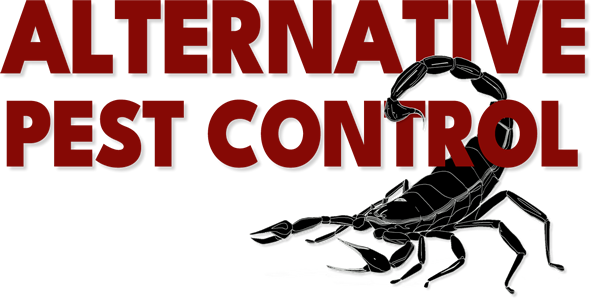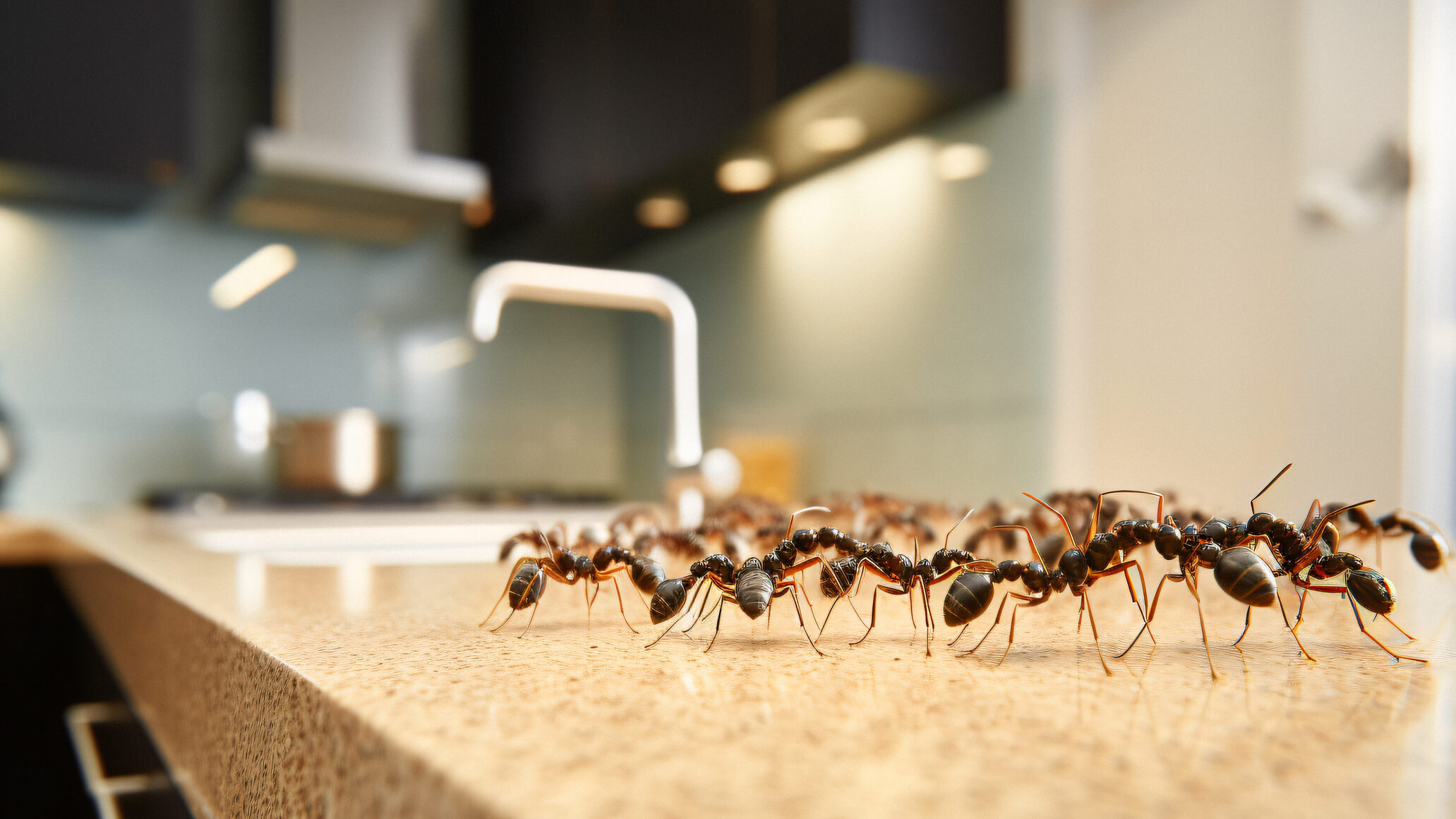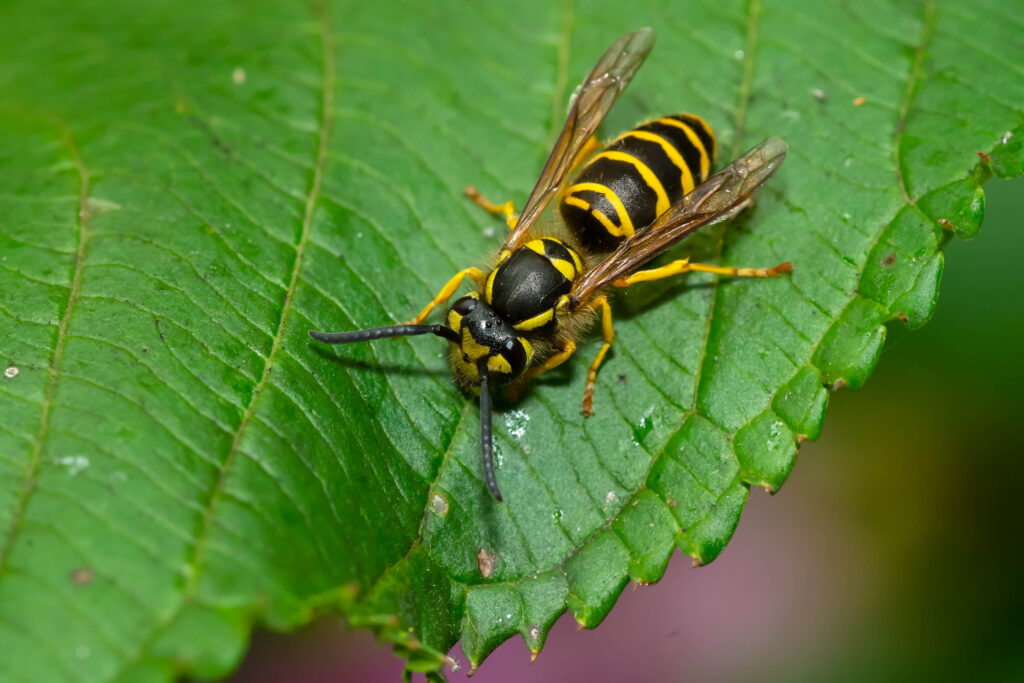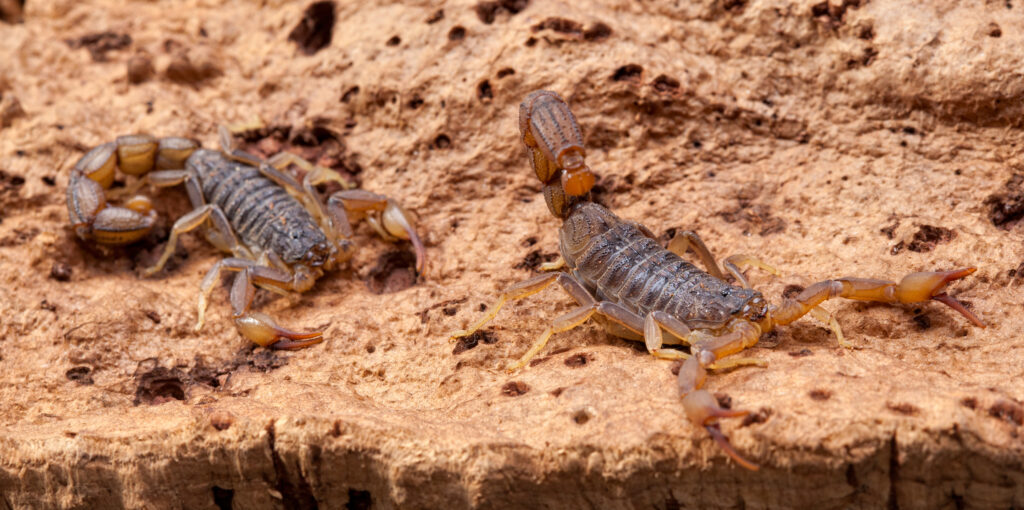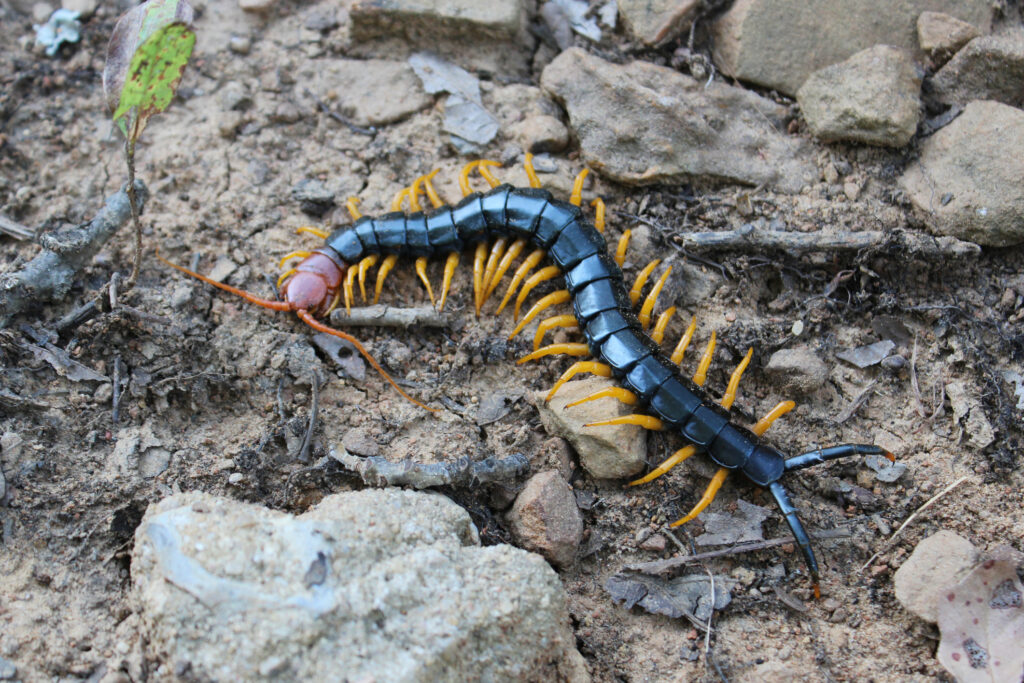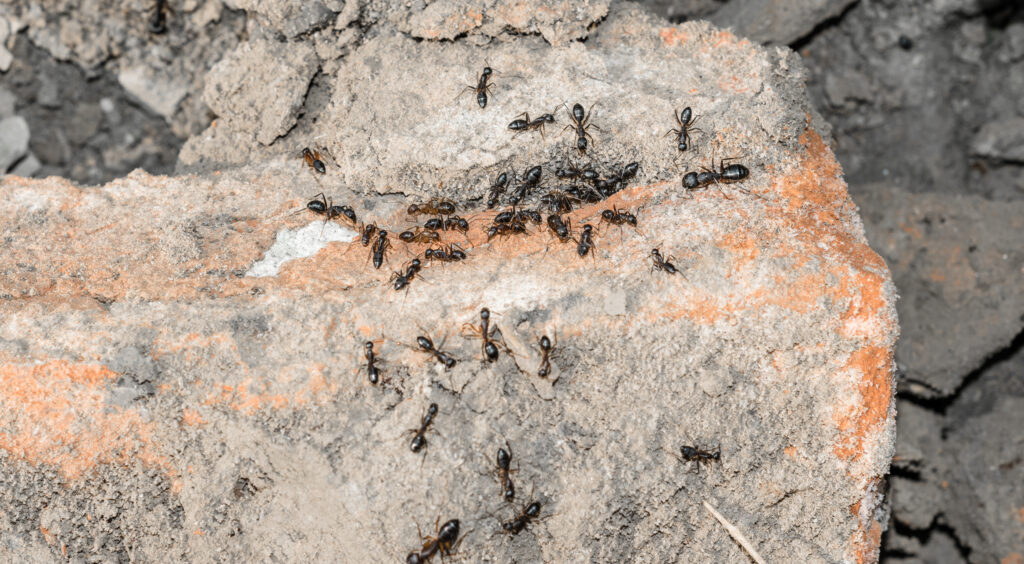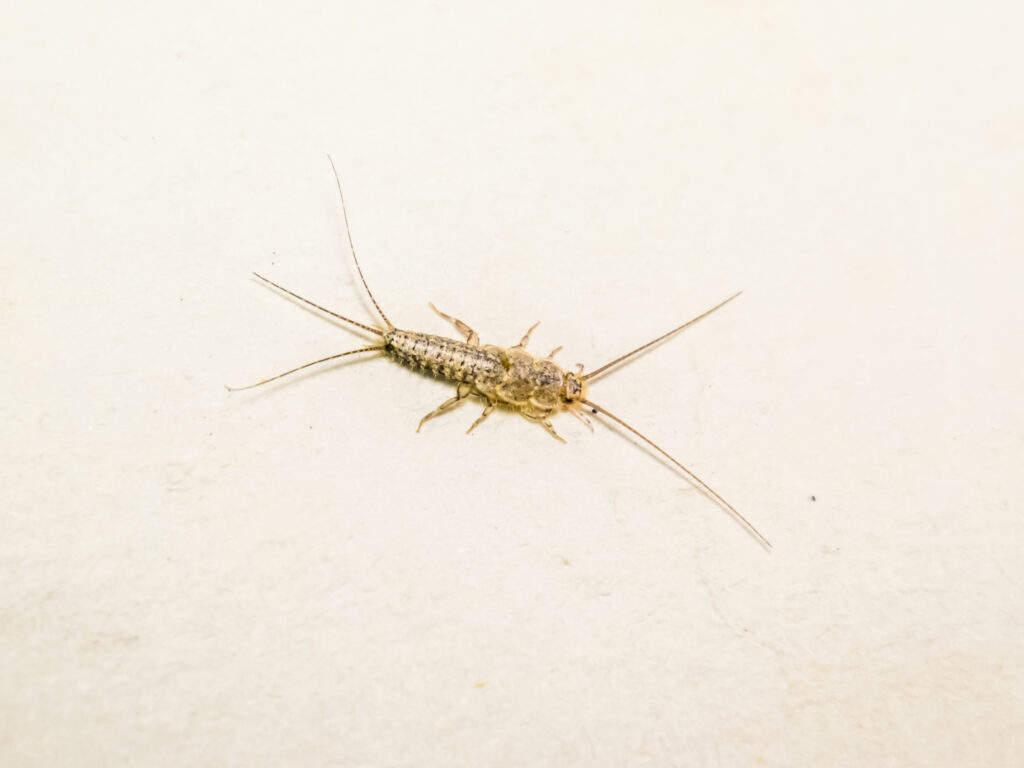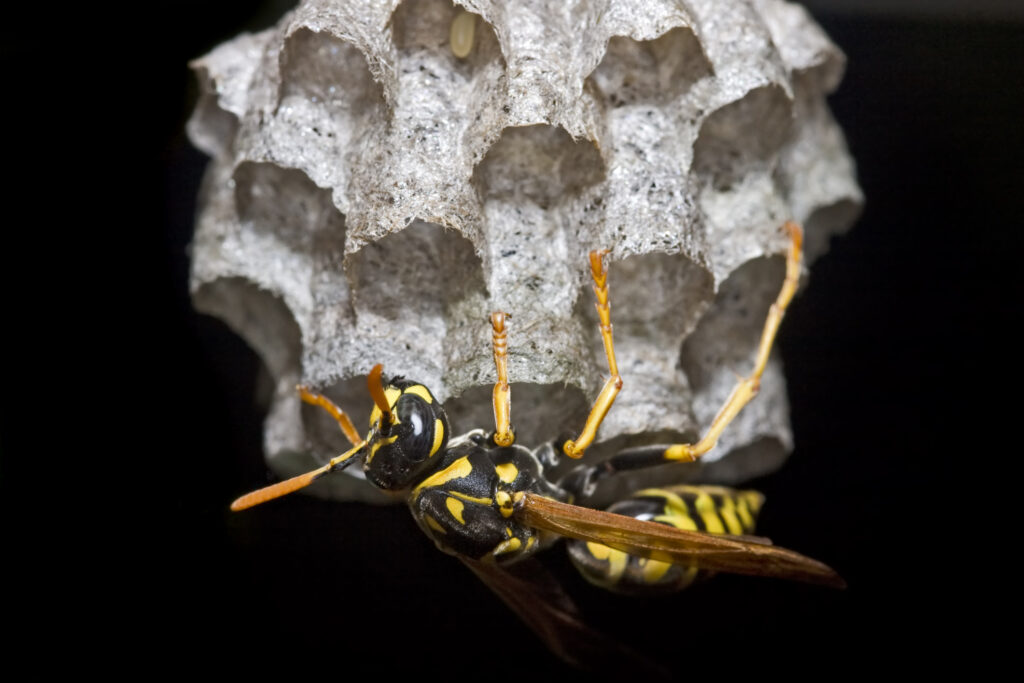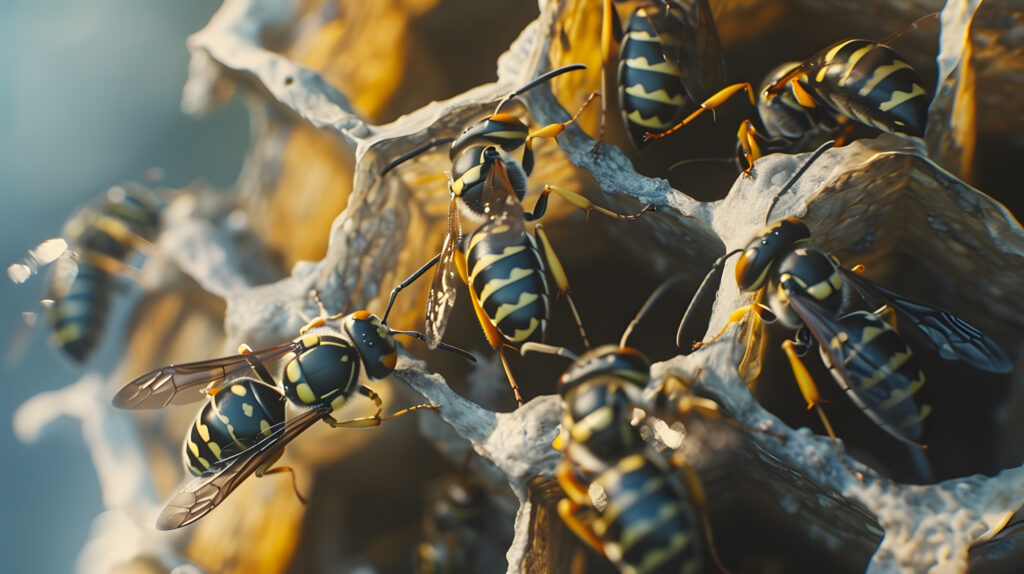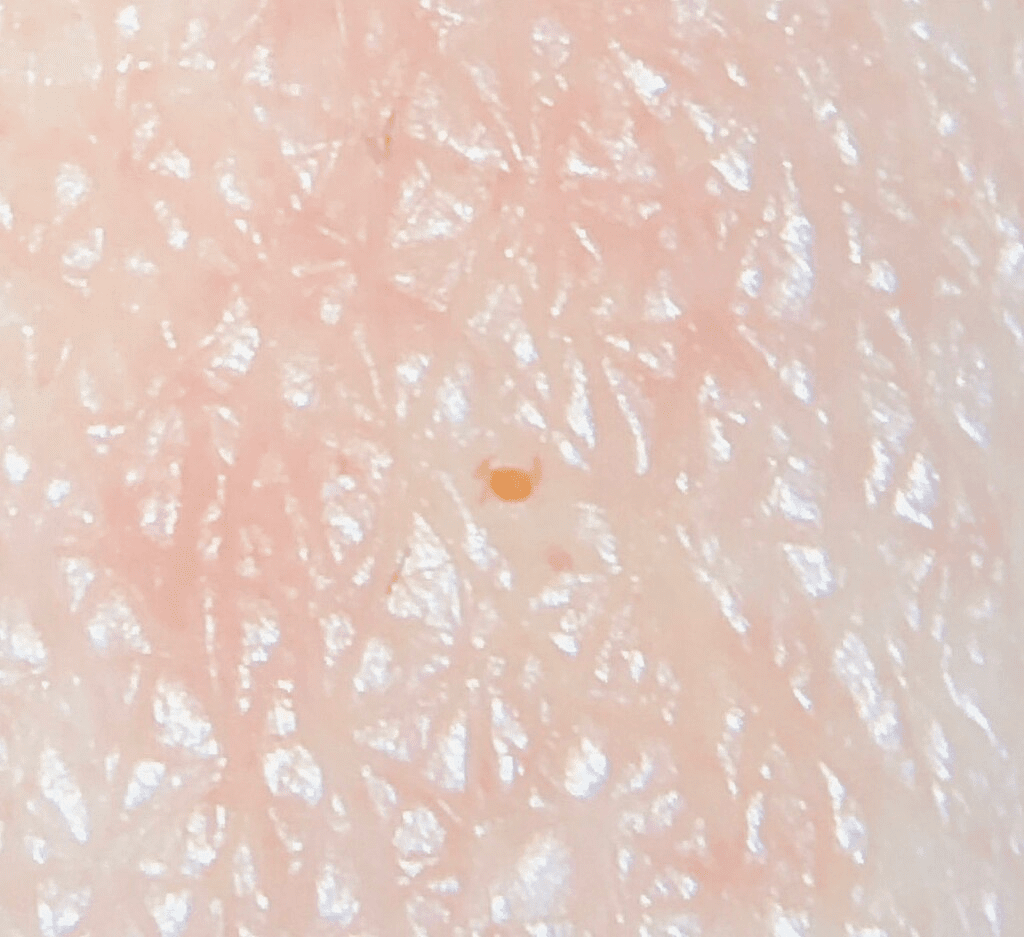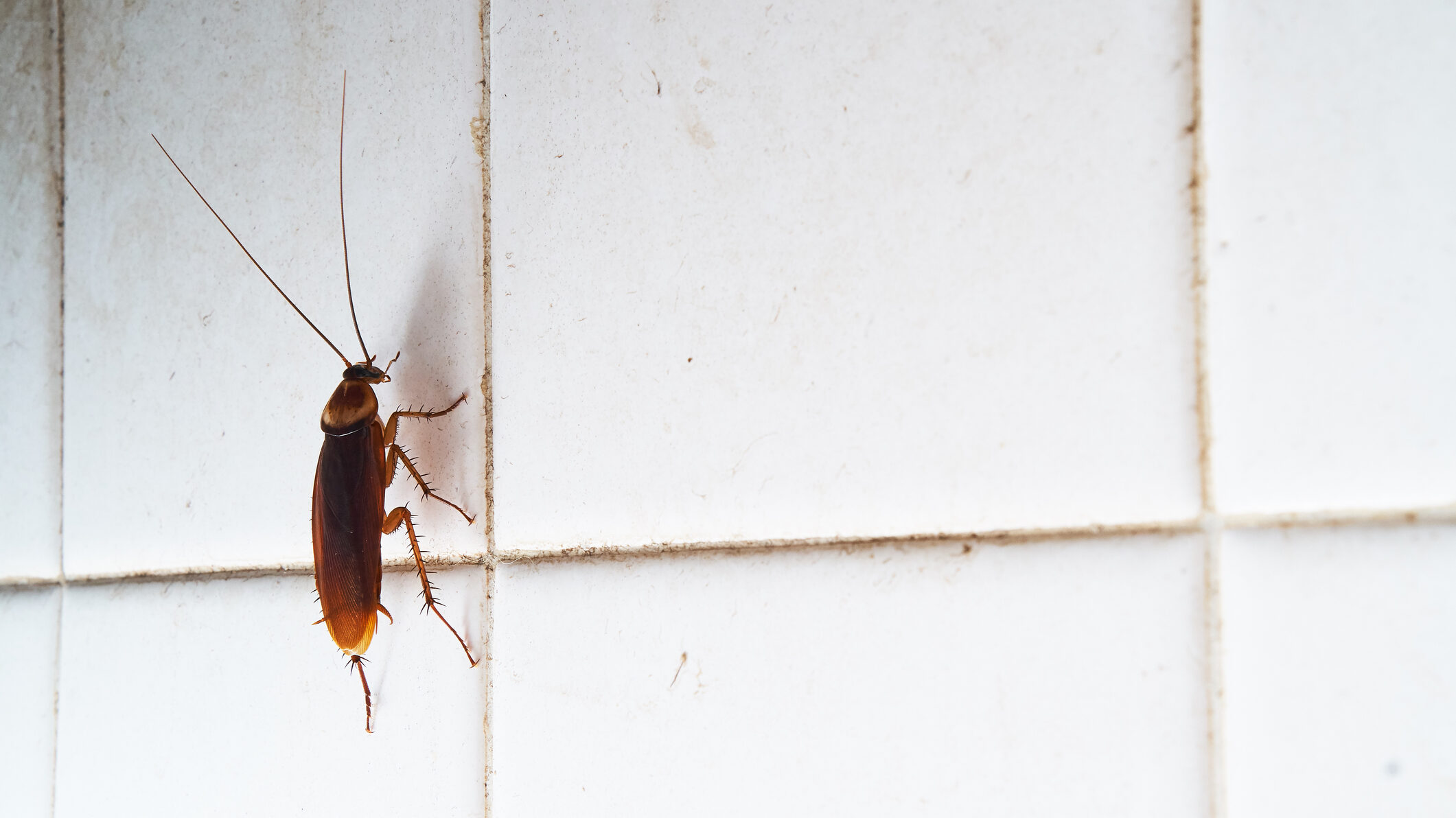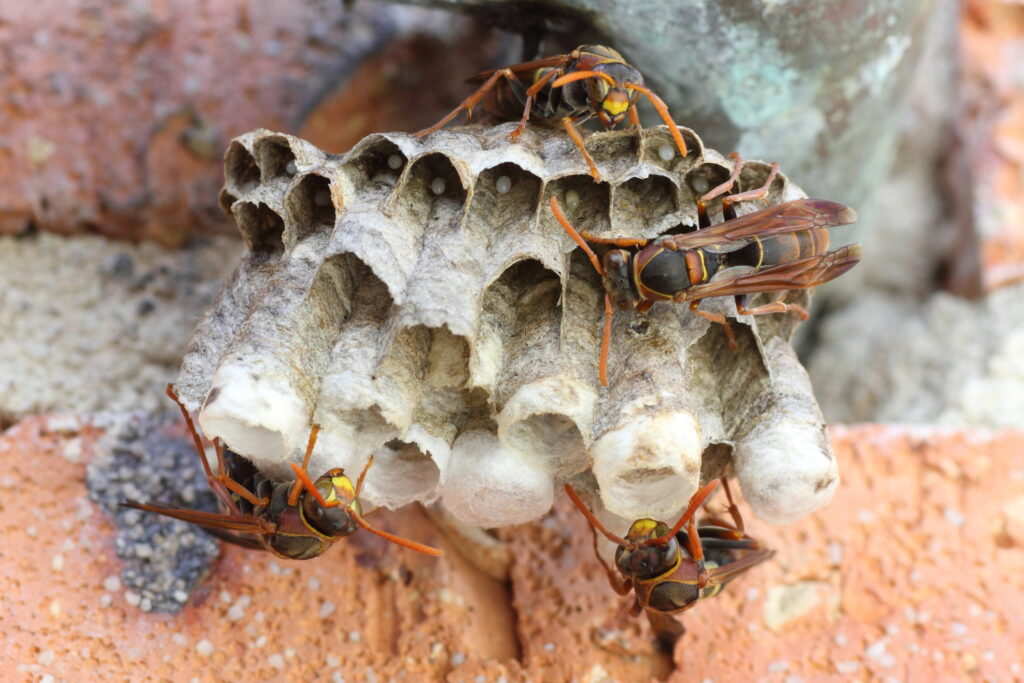
If you live in a warm weather state, you’ve probably encountered paper wasps. These yellow and black insects are often mistaken for hornets but are actually a type of social wasp. Lots of people call them yellow jackets, even though they are not the same species. They are beneficial for your garden but paper wasps can be a nuisance when they decide to build a nest on your property. Their presence not only poses a risk of stings but also creates an eyesore and can lead to a larger infestation if left unchecked.
What Are Paper Wasps?
Paper wasps (genus Polistes) are a type of social wasp that builds their nests out of paper-like material created from chewed wood fibers mixed with saliva. The nests are typically umbrella-shaped and can be found in sheltered areas such as eaves, roof overhangs, attics, and garden sheds. Paper wasps are most active during the late spring and summer months, with peak activity during warm weather.
While these wasps are generally not aggressive unless provoked, they can become a serious concern if they decide to build a nest near your home. The nests grow in size as the season progresses, and they may harbor hundreds of wasps. If you or a family member accidentally disturb the nest, the wasps will defend it, leading to painful stings. They are more aggressive when guarding the nest.
Why Should You Prevent Paper Wasps from Nesting on Your Home?
There are several reasons why it’s important to prevent paper wasps from building nests on your house:
• Risk of Stings
While paper wasps are not as aggressive as hornets, they will sting in defense of their nest. Their sting can be painful and cause allergic reactions in some individuals. Multiple stings can lead to more severe reactions, including anaphylaxis, a life-threatening condition that requires immediate medical attention. Even if you are not allergic, it still hurts!
• Nuisance
A wasp nest on your house is not only a safety concern but also an unsightly nuisance. You may not want to live with the constant fear of encountering these stinging insects near your front door, windows, or patio. I have seen paper wasps build a nest on a front door, making it very difficult to just “ignore” them.
• Increased Infestation
A single nest may seem manageable at first, but if left alone, it can grow rapidly. Paper wasps are social insects, and their colonies can expand as the season progresses. By the end of summer, a single nest can house hundreds of wasps. On properties that have not been treated before, I have seen nests the size of softballs with 40-50 wasps on it, and 8-10 of those nests around the property.
How to Prevent Paper Wasps from Building Nests on Your Home
Fortunately, there are several effective strategies you can use to prevent paper wasps from building nests on your property. The key to success is being proactive. Here are the most effective methods:
• Regular Home Inspections
One of the best ways to prevent paper wasps from building nests is by regularly inspecting your home. Wasps often seek out sheltered, undisturbed areas for nest building. Common places where you might find wasp nests include:
- Eaves and soffits: These areas provide excellent shelter for wasps to build their nests.
- Roof overhangs: Wasps will often settle on the underside of roof overhangs to take advantage of protection from the elements.
- Chimneys and vents: Paper wasps can easily build nests inside unused chimneys or ventilation ducts.
- Gutters and downspouts: Areas that are hard to reach or rarely cleaned can offer ideal nesting sites.
- Underneath Staircases: These sheltered areas keep them dry and safe
Inspect these areas frequently, particularly during the spring and early summer months, when paper wasps are actively building their nests. Catching a nest early when it’s small can save you from a bigger infestation later on. All those little white bulbs on their nest contain new wasps which will hatch eventually.
• Seal Gaps and Cracks
Wasps can enter your home through even the smallest gaps or cracks. To prevent paper wasps from finding a way in, seal any gaps or cracks around windows, doors, rooflines, vents, and chimneys. Use caulking or weatherstripping to fill in these openings, and ensure that window screens are intact. This is a simple but effective way to block wasps from gaining access to your home and establishing a nest inside. I had a customer with wasps upstairs in the beginning of spring and they were coming from an open flue on the fireplace.
• Hang Decoy Nests
Wasps are territorial creatures, and they often avoid nesting near other colonies. By hanging a decoy wasp nest in your yard, you can trick paper wasps into thinking the area is already claimed. This simple method can be an effective deterrent for preventing wasps from building nests on your home.
You can purchase decoy nests online or make your own. To create a homemade decoy nest, simply take a paper bag and crumple it into a round, ball-like shape. Hang it in a visible spot near your home where you’ve noticed wasps in the past.
• Use Wasp Repellents
There are several natural repellents you can use to deter paper wasps from building nests on your home. Many of these repellents work by creating an unpleasant scent that masks the pheromones wasps use to communicate with each other. Some popular natural repellents include:
- Peppermint oil: Wasps dislike peppermint oil, and it can be used to make a DIY wasp repellent spray. Mix a few drops of peppermint oil with water and a small amount of dish soap, and spray it around areas where wasps are likely to build their nests.
- Cinnamon: Wasps are also repelled by cinnamon. You can sprinkle cinnamon powder around areas where you want to discourage nesting.
- Citrus: Wasps dislike citrus scents. You can use citrus peels or make a citrus-based spray to deter them.
- Botanical Professional Products: Essentria, EcoVia EC, and some other brands of products have essential oils already mixed in them for home use. They are very effective against wasps, as a repellent or a spot spray. It will coat the wasps in the oils and kills them very quickly.
Essential oils like eucalyptus, citronella, and tea tree oil are also effective natural repellents. These oils can be mixed with water and sprayed around your home to prevent wasps from settling.
• Install Screens on Vents and Chimneys
Paper wasps often target chimneys, vents, and other openings as potential nesting sites. Installing fine mesh screens on vents, chimneys, and attic openings will keep wasps from accessing these areas. It’s important to check these screens regularly to ensure that they are in good condition and have not been damaged by wind or weather. Like I mentioned earlier, I have found wasps entering houses from open chimney flues once winter is over.
• Paint Eaves, Soffits, & Porches Blue
I didn’t believe it when I first heard about this but I have had customers paint the ceilings of porches and eaves sky blue and wasps won’t build there because it looks like the sky. I have some customers who have never had a wasp build there, not even once.
• Remove Existing Nests Promptly
If you discover a wasp nest on your property, it’s important to remove it as soon as possible, especially during the early stages of nesting. A small nest is much easier to deal with than a fully developed one. Get a one gallon pump sprayer or a hose-end sprayer and mix a wasp spray using essential oils or a professional product labeled for wasps. My favorite is EcoVia because it has multiple essential oils in it and it drops wasps fast so I don’t get stung.
Important: If you are dealing with a large nest or if you are allergic to wasp stings, it’s safest to call a professional pest control service to remove the nest. If you attempt to remove the nest yourself, be sure to wear protective clothing and use a long pole to avoid getting too close to the nest.
• Use Traps
There are commercial wasp traps available that can help reduce the number of paper wasps around your home. These traps use attractants to lure wasps in and then trap them inside. Placing these traps around your yard, especially near areas where wasps are frequently seen, can help reduce the population and prevent them from building nests near your home. I have found that lots of these yellow sticky traps mostly catch mud daubers, which are not aggressive, but it is still worth a try.
• Seek Professional Help (Alternative Pest Control to the Rescue!)
If you find that paper wasps are repeatedly building nests on your property despite your efforts, it may be time to call in a professional pest control expert. We have the tools and products to reach even the highest of nests and can eliminate a lot of wasps in one trip. Reminds me of a house in Vintage Oaks Subdivision (New Braunfels, TX) that I treated last summer which had about as many wasps as I’ve seen on a newer house. When I left there were at least 300 dead wasps around the perimeter!
Conclusion
Preventing paper wasps from building nests on your home requires a combination of vigilance, proactive measures, and natural deterrents. If you do find a nest, act quickly to remove it before it grows into a larger problem. By following these tips, you can enjoy a wasp-free home and reduce the risk of stings and property damage.
